Main menu
Common skin conditions

NEWS
Join DermNet PRO
Read more
Quick links
Lichen striatus — extra information
Lichen striatus
Last Reviewed: March, 2024
Author: Vanessa Ngan, Staff Writer, 2003; updated by Dr Ian Coulson, Dermatologist, United Kingdom (2024).
Edited by the DermNet content department.
Introduction
Demographics
Clinical features
Diagnosis
Treatment
What is lichen striatus?
Lichen striatus is an uncommon self-limiting skin rash that occurs mainly in children. It presents as pink raised spots that join together to form one or more dull red slightly scaly linear bands.
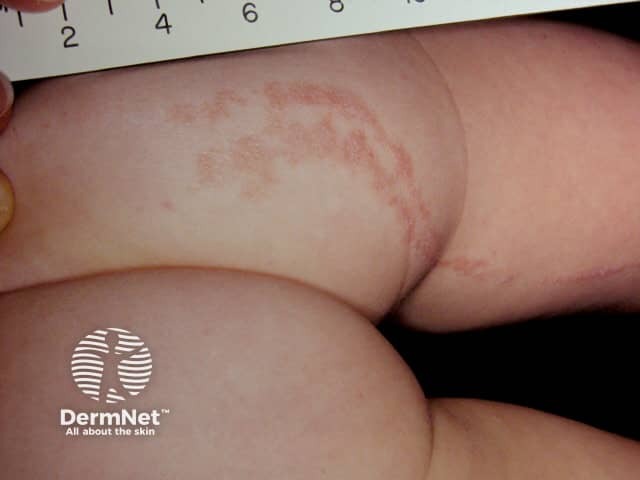
Lichen striatus
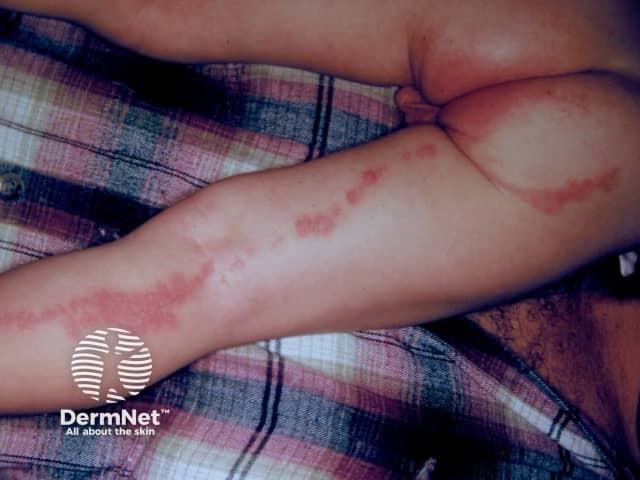
Lichen striatus

Lichen striatus
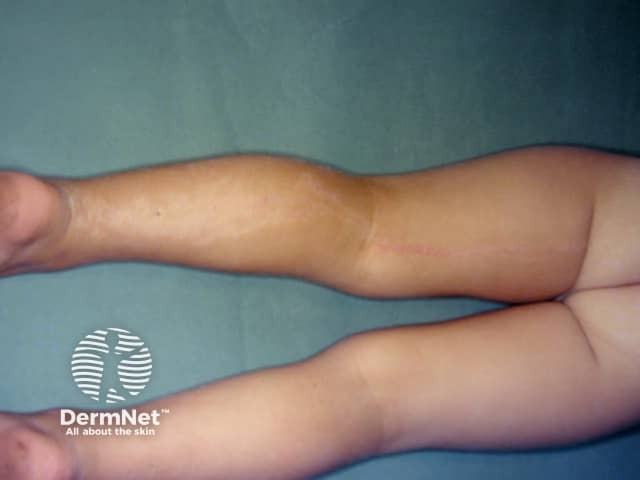
Lichen striatus
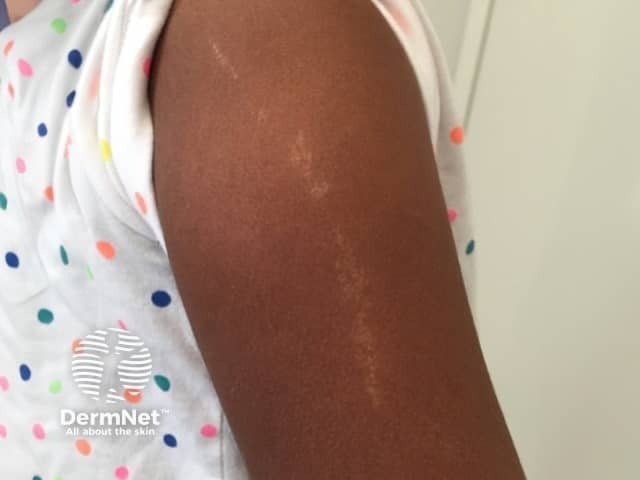
Lichen striatus
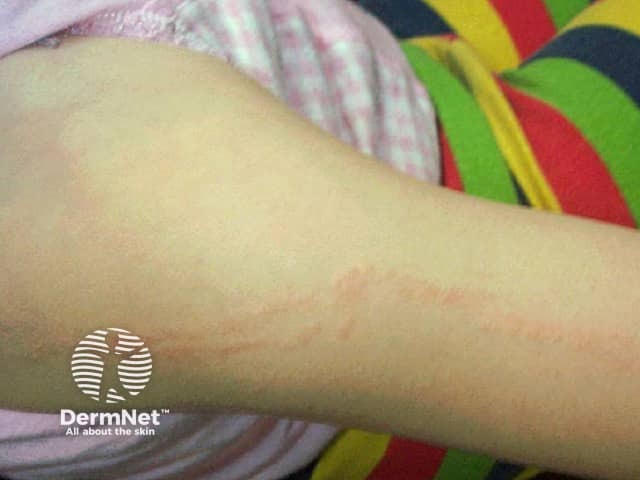
Lichen striatus

Lichen striatus
Why does lichen striatus occur and who is at risk?
The cause of lichen striatus is unknown. Possibly genetic factors or environmental triggers have a role to play in its development. The eruption affects the lines of Blaschko, which are thought to be embryonic in origin.
Over 50% of cases occur in children aged between 5 and 15 years. It appears in females two or three times as often as in males. It is rare in adults when it is sometimes known as acquired blaschkoid dermatitis or blaschkitis.
Case clustering in time and location has suggested an infectious cause but no specific agent has been identified.
The association with atopy is controversial, with some studies suggesting it is more common in those with asthma, eczema, and hayfever. Onset has been reported after immunisations (hepatitis B, BCG and COVID) as well as shortly after natural COVID infection. The Anti-TNFα drugs etanercept and adalimumab may rarely trigger the eruption.
What does lichen striatus look like?
Lichen striatus starts as small pink, red or flesh coloured spots that over the course of one or two weeks join together to form a dull red slightly scaly linear band. The band is usually 2 mm to 2 cm in width and may be a few centimetres in length or may extend the entire length of the limb. Sometimes there are two parallel bands. Lesions occur most commonly on one arm or leg but can affect the neck, face, or trunk. Sometimes a band may extend from the leg onto the buttock or abdomen. Usually, there are no symptoms but some patients may complain of slight or intense itching.
Occasionally nails may be affected, sometimes without any skin lesions. They become thick, ridged, split and may rarely fall off altogether before recovery.
How is lichen striatus diagnosed?
Lichen striatus is diagnosed by its typical clinical appearance. Findings on histopathology of a skin biopsy may also be helpful.
What is the differential diagnosis for lichen striatus
- Unilateral laterothoracic exanthem
- Linear lichen planus
- Lichen nitidus
- Inflammatory linear verrucous epidermal naevus pathology (ILVEN)
What treatments are available for lichen striatus?
There is no effective treatment for lichen striatus and in most cases none is necessary. It usually resolves within 6 months but may leave temporary pale or dark marks (hypopigmentation or hyperpigmentation).
Emollients may be used to help treat dryness or itching, if present. Topical steroids or the calcineurin inhibitors topical tacrolimus or pimecrolimus may clear the lesions although they may take some weeks to be effective.
References
- Campanati A, Brandozzi G, Giangiacomi M, Simonetti O, Marconi B, Offidani AM. Lichen striatus in adults and pimecrolimus: open, off-label clinical study. Int J Dermatol. 2008 Jul;47(7):732–6. Medline.
- Charifa A, Jamil RT, Ramphul K. Lichen Striatus. In: StatPearls. Treasure Island (FL): StatPearls Publishing; August 8, 2023. PubMed
- Müller CSL, Schmaltz R, Vogt T and Pföhler T. Lichen striatus and blaschkitis: reappraisal of the concept of blaschkolinear dermatoses. Br J Dermatol 2011. DOI 10.1111/j.1365-2133.2010.10053.x. PubMed
On DermNet
- Lichen striatus – pathology
- Mosaicism
- Birthmarks
- Acquired blaschkoid dermatitis
- Superimposed segmental manifestation of polygenic skin disorders
Other websites
- Lichen striatus — Medscape Reference
